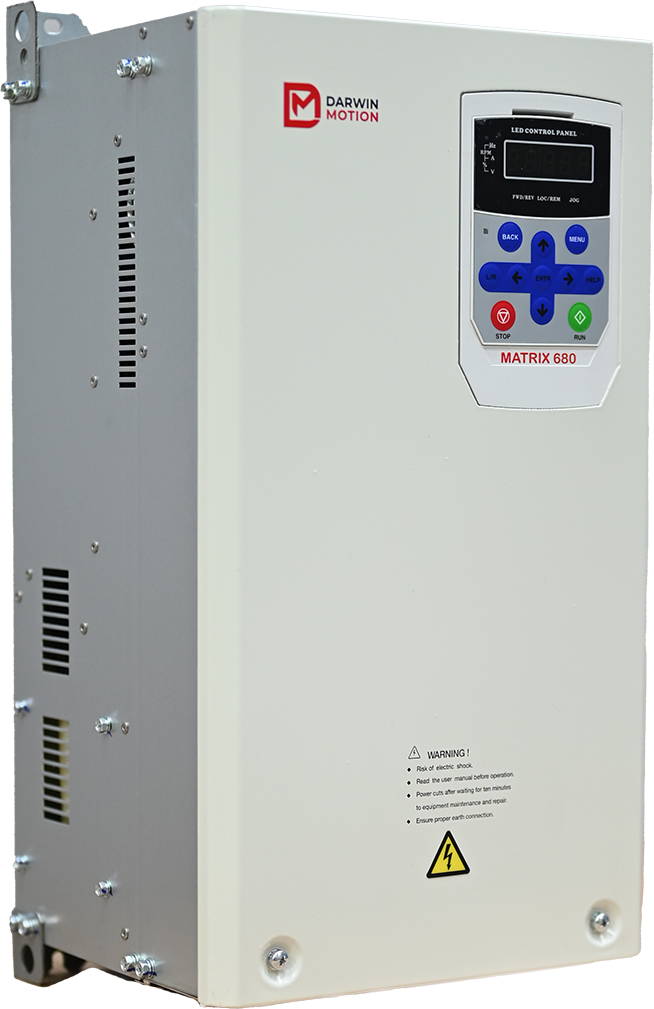Posted on 21st Oct 2024

High-performance AC drives, also known as variable frequency drives (VFDs) or adjustable speed drives (ASDs), are pivotal in modern industrial automation. They provide precise control over electric motors by adjusting the frequency and voltage of the power supplied to them. This capability not only enhances energy efficiency but also improves the performance and lifespan of equipment. In this article, we’ll explore the fundamentals of high-performance AC drives, their advantages, applications, and future trends.
AC drives convert fixed frequency AC power into variable frequency AC power, allowing for the adjustment of motor speed and torque. The main components of an AC drive include:
Rectifier: Converts incoming AC power to DC.
DC Bus: Smoothens the DC voltage and serves as an energy reservoir.
Inverter: Converts the DC back to variable frequency AC to control the motor.
Speed Control: Enables precise control of motor speed, which is crucial for applications requiring variable output.
Torque Control: Adjusts the torque delivered by the motor to suit different operational needs.
Regenerative Braking: Captures energy during braking and feeds it back into the power supply, improving energy efficiency.
Communication Capabilities: Many drives offer compatibility with various communication protocols, allowing for integration into broader automation systems.
Energy Efficiency: By optimizing motor speed to match load requirements, AC drives significantly reduce energy consumption, leading to lower operational costs.
Reduced Wear and Tear: Soft starting and stopping reduce mechanical stress on motors and associated equipment, extending their lifespan.
Enhanced Process Control: Precise speed and torque control facilitate better process management, improving product quality and consistency.
Flexibility: AC drives can be easily programmed and adapted to various applications, making them suitable for diverse industries.
Environmental Impact: By lowering energy consumption, high-performance AC drives contribute to reduced carbon footprints and compliance with environmental regulations.
High-performance AC drives find application across numerous sectors, including:
Manufacturing: For controlling conveyor belts, pumps, and fans in production lines.
HVAC Systems: Regulating fan speeds and compressor operations for efficient heating and cooling.
Water and Wastewater Management: Controlling pumps for better resource management and energy savings.
Transportation: Used in electric vehicles and trains for efficient propulsion and regenerative braking.
Mining and Mineral Processing: For precise control of machinery in demanding environments.
As technology advances, the future of high-performance AC drives looks promising. Some emerging trends include:
Integration with IoT: Increased connectivity will enable real-time monitoring and data analytics, facilitating predictive maintenance and operational optimization.
Artificial Intelligence (AI): AI algorithms can enhance control strategies, making AC drives smarter and more adaptive to changing operational conditions.
Energy Storage Systems: Integration with energy storage technologies will allow for better energy management and efficiency in renewable energy applications.
Miniaturization: Ongoing advancements in semiconductor technology will lead to smaller, more powerful drives that require less physical space and energy.
Darwin Motion High-performance AC drives are transforming industrial automation by providing greater efficiency, flexibility, and control over electric motors. As industries continue to evolve, the adoption of these drives will likely accelerate, paving the way for smarter, more sustainable manufacturing processes. Investing in high-performance AC drives not only enhances operational efficiency but also positions businesses to meet future challenges in an increasingly competitive landscape.